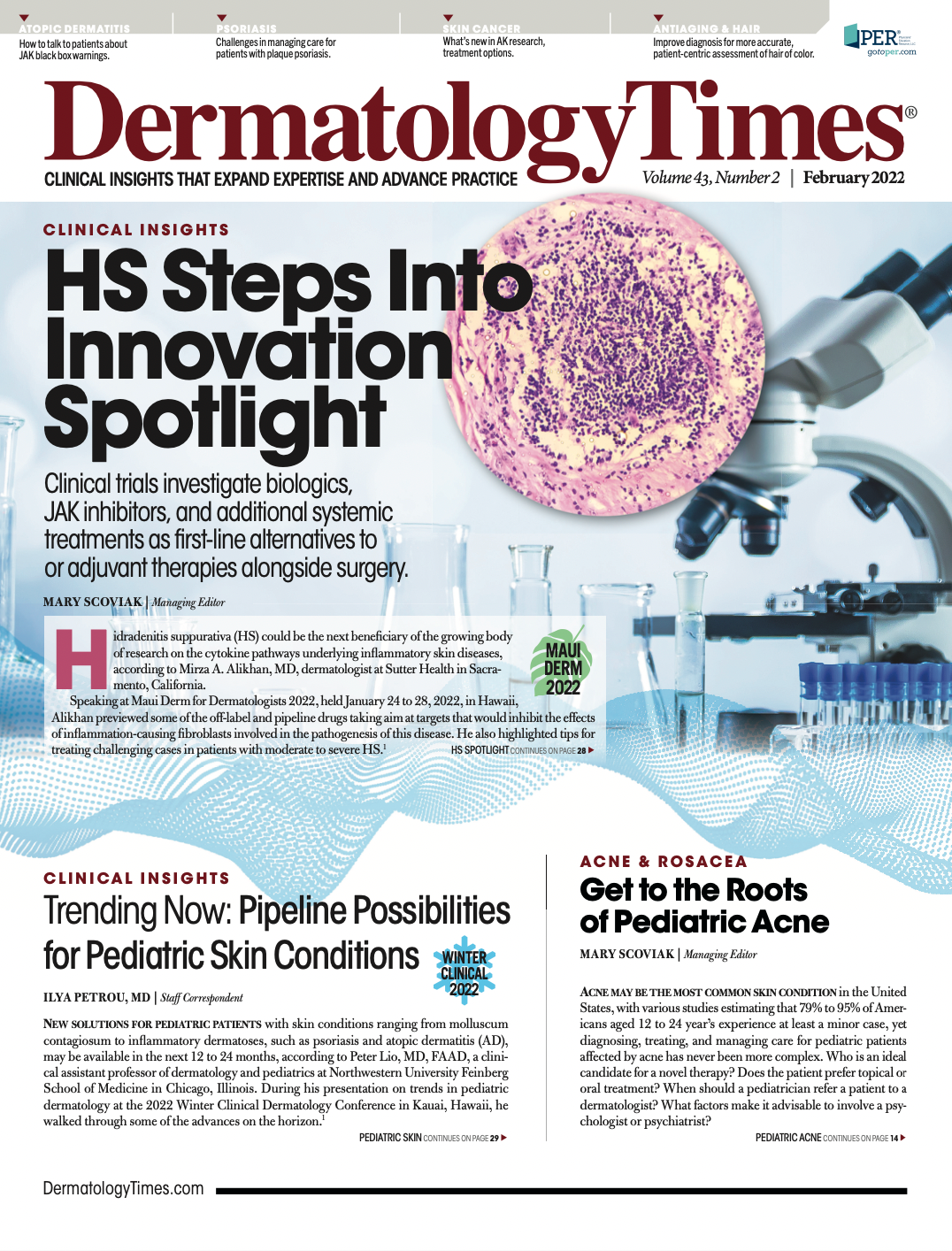- Case-Based Roundtable
- General Dermatology
- Eczema
- Chronic Hand Eczema
- Alopecia
- Aesthetics
- Vitiligo
- COVID-19
- Actinic Keratosis
- Precision Medicine and Biologics
- Rare Disease
- Wound Care
- Rosacea
- Psoriasis
- Psoriatic Arthritis
- Atopic Dermatitis
- Melasma
- NP and PA
- Skin Cancer
- Hidradenitis Suppurativa
- Drug Watch
- Pigmentary Disorders
- Acne
- Pediatric Dermatology
- Practice Management
- Prurigo Nodularis
- Buy-and-Bill
Publication
Article
Dermatology Times
New Approaches in Rosacea Therapy
Author(s):
Neal Bhatia, MD, highlights new approaches in rosacea therapy in his session at the Fall Clinical Dermatology Conference for PAs & NPs.
Neal Bhatia, MD, director of clinical dermatology at Therapeutics Clinical Research in San Diego, California, shared new approaches in rosacea therapy at the 2021 Fall Clinical Dermatology Conference for PAs & NPs, held November 12-14, in Orlando, Florida, and virtual.1
Comparing the adverse events (AEs) of doxycycline vs minocycline, doxycycline causes more gastrointestinal (GI) issues, depending on formulations. Additionally, absorption is impacted by food, dairy, and use of enteric coatings, Bhata noted.2 Photosensitivity potential is also higher with doxycycline, and there are higher risks of vaginal candidiasis due to dosage and duration of therapy.
Strategies to reduce the risk of AEs with doxycycline include drinking a large glass of water and eating food with medication than remaining upright for at least a few hours after ingestion, Bhatia said.
There is a decrease in absorption of doxycycline if it is co-ingested with metal ions present in foods or antacids containing aluminum, calcium or dairy, fortified cereals, vitamin/mineral supplements, as well as antacids with calcium, magnesium, and/or aluminum, he said.
Clinicians can also recommend probiotics to alleviate the AEs of doxycycline, adding protective flora back to the GI tract. “They may reduce diarrhea and nausea,” Bhatia said.
SIBO & Rosacea
Patients with rosacea have been found to have a significantly higher prevalence of small intestinal bacterial overgrowth (SIBO) relative to healthy controls, according to Bhatia.
A prospective study investigated the prevalence of SIBO and/or Helicobacter pylori (H pylori) in patients with rosacea. In 40 patients with rosacea and SIBO, utilizing both a lactulose breath test and glucose breath test, researchers found a significantly higher prevalence of H pylori in rosacea patients relative to control.3 “However, in this study there was no significant difference in the prevalence of SIBO between rosacea patients and control,” Bhatia said.
Disclosures:
Bhatia is affiliated with Abbvie, Almirall, Arcutis, Arena, Biofrontera, BMS, BI, Brickell, Dermavant, EPI Health, Ferndale, Galderma, Genentech, Incyte, ISDIN, J&J, LaRoche-Posay, Leo, Lilly, Mayne, Novartis, Ortho, Pfizer, P&G, Regeneron, Sanofi, Stemline, SunPharma, Verrica, and Vyne.
References:
- Bhatia, N. New Approaches to Rosacea Therapy, Fall Clinical Dermatology Conference 2021. November 12-14, 2021. Orlando, FL and virtual.
- Gollnick H, Cunliffe W, Berson D, et al. Management of acne. Journal of the American Academy of Dermatology. 2003;49(1):S1-S37.
- Drago F, De Col E, Agnoletti AF, et al. The role of small intestinal bacterial overgrowth in rosacea: A 3-year follow-up. J Am Acad Dermatol. 2016;75(3):e113-e115.
- Ci X, Li H, Yu Q, et al. Avermectin exerts anti-inflammatory effect by downregulating the nuclear transcription factor kappa-B and mitogen-activated protein kinase activation pathway. Fundamental & Clinical Pharmacology. 2009;23(4):449-455.







